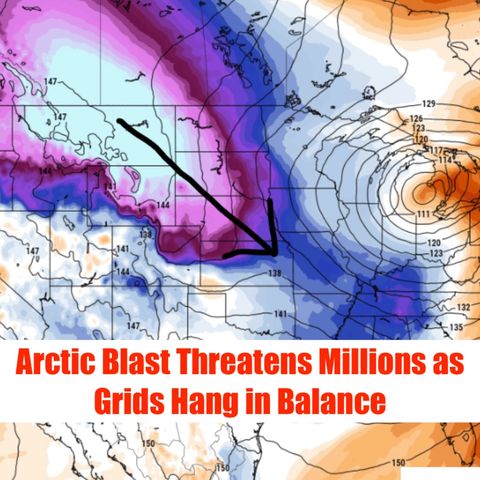Arctic Blast Sweeps Across the U.S.: What You Need to Know A powerful arctic blast is gripping much of the United States, bringing dangerously low temperatures, wind chills, and potential blizzards to several regions. Here's a detailed breakdown of the situation: Areas Affected: The brunt of the cold snap is impacting the Midwest, Northeast, and Plains states, but its reach extends into the South and even parts of the West Coast. Cities like Chicago, Minneapolis, Buffalo, Denver, and Dallas are bracing for significant impacts. Temperatures and Wind Chills: Temperatures are expected to plummet well below freezing, with some areas experiencing wind chills below -40°F (-40°C). These extreme wind chills can cause skin to freeze in as little as five minutes, posing a serious health risk. Blizzard Warnings: Blizzard warnings have been issued for several states, including parts of Minnesota, Wisconsin, North Dakota, and South Dakota. These warnings signify the potential for dangerous snowfall combined with strong winds, creating near-zero visibility and treacherous travel conditions. Travel Impacts: Major disruptions are expected on the roads and in the air. Airlines have already preemptively canceled thousands of flights, and road closures due to snow and ice are likely. It's crucial to exercise caution and avoid unnecessary travel during this time. Power Outages: Freezing temperatures and heavy snowfall can increase the risk of power outages. Staying informed about local alerts and having adequate emergency supplies, including food, water, and warm clothing, is essential. Staying Safe: Here are some key safety tips to remember:
- Dress in layers for extreme cold, including gloves, hats, and scarves.
- Stay indoors if possible, and limit outdoor exposure when temperatures are dangerously low.
- Check on vulnerable neighbors and family members who may need assistance.
- Keep your home warm and ensure your carbon monoxide detectors are functioning properly.
Monitoring the Situation: It's crucial to stay up-to-date on the latest weather advisories and warnings for your area. Resources like the National Weather Service website and local news outlets can provide valuable information. Remember: This arctic blast is a serious weather event with the potential for significant disruptions. By staying informed, taking precautions, and prioritizing safety, you can navigate this cold snap safely and effectively. Can the Grids Hold Up? The Arctic Blast and Potential Fallout Across the U.S. The arctic blast isn't just delivering record-breaking chills, it's also raising concerns about the ability of power grids across the affected states to withstand the increased strain. Let's take a closer look at the potential vulnerabilities and what it could mean for people and industries: Texas: A Repeat in the Making? Texas, still haunted by the February 2021 blackout that left millions in the dark, is under intense scrutiny. While grid officials assure improved winterization efforts and increased natural gas supplies, fears linger. The Electric Reliability Council of Texas (ERCOT) anticipates record electricity demand, possibly exceeding the 2022 peak. This strain, coupled with potential equipment failures caused by extreme cold, could trigger rolling blackouts or even worse. Beyond Texas: Domino Effect Potential The interconnected nature of the U.S. power grid means an issue in one region can cascade into others. For instance, an overload in Texas could affect the Midcontinent Independent System Operator (MISO) region, impacting areas from Minnesota to Louisiana. The domino effect could trigger widespread outages, leaving millions vulnerable to the freezing temperatures. Impact on People and Industries: The consequences of grid failure go beyond inconvenience. Businesses could face closures and financial losses, impacting supply chains and potentially leading to higher consumer prices. Hospitals and other critical infrastructure rely on consistent power, adding a layer of urgency to the situation. People with compromised health or limited access to resources are particularly vulnerable, and communities could scramble to establish warming centers and emergency shelters. Managing the Risk: Grid operators are taking measures to mitigate risks, including implementing rolling blackouts as a last resort and urging consumers to conserve energy. Public awareness campaigns and emergency preparedness efforts are crucial to help individuals and communities weather potential disruptions. Uncertainty Amid the Cold: It's too early to predict with certainty the magnitude of the grid's response to the arctic blast. However, the potential for widespread outages underlines the urgency of ongoing infrastructure upgrades and grid modernization efforts. As the cold air descends, the U.S. stands at a crossroads, facing the test of its resilience and preparedness against a powerful natural phenomenon. Remember: This is a rapidly evolving situation. Stay informed about local alerts and advisories, prepare emergency kits, and follow official recommendations for energy conservation. Together, we can navigate this challenging weather event with awareness and preparation.


